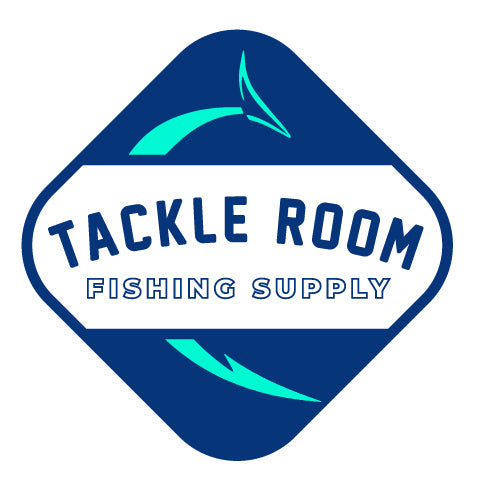Choosing the right fishing line can make all the difference between landing that big catch and losing it at the last second. There are three main types of fishing lines—monofilament, braided, and fluorocarbon—each with its own set of advantages and drawbacks. Understanding the differences will help you select the best line for your fishing needs.
Monofilament
Monofilament is the most common type of fishing line and is often the go-to choice for beginners and casual anglers. It’s known for its versatility and affordability.
Pros:
- Affordable: Monofilament is the most cost-effective option, making it a great choice for anglers on a budget.
- Stretchability: The slight stretch of monofilament helps absorb sudden shocks, which can prevent line breakage when fighting fish.
- Easy to Handle: It is softer and more flexible than braided or fluorocarbon lines, which makes it easier to cast and tie knots.
- Versatile: Works well in both freshwater and saltwater, and can be used for a variety of fishing techniques, from topwater to bottom fishing.
- Visibility: The natural color of monofilament is often easier to see in the water, which can help anglers detect bites more easily.
Cons:
- More Visible to Fish: Monofilament line is more visible underwater, which could deter cautious fish from biting, especially in clear water.
- Less Abrasion-Resistant: Monofilament is not as resistant to abrasion as braided or fluorocarbon lines. It can fray when dragged across rocks, coral, or other rough surfaces.
- Weaker Knot Strength: While it’s easy to tie, monofilament tends to lose some of its strength at knot points, especially when tied improperly.
- Less Sensitive: Due to its stretchiness, monofilament is less sensitive than braided or fluorocarbon lines, making it harder to detect subtle bites.
Braid
Braided fishing line is known for its strength and durability. It’s a top choice for anglers who need a high-strength line that can handle heavy fish or extreme conditions.
Pros:
- High Strength-to-Diameter Ratio: Braided line is incredibly strong for its thickness, allowing anglers to use thinner lines while still maintaining strength. This is ideal for catching large fish in deep water.
- No Stretch: Unlike monofilament, braided line has no stretch, providing superior sensitivity and allowing anglers to feel every bite or nibble.
- Durable and Abrasion-Resistant: Braided line is extremely resistant to abrasion and won’t break or fray easily, even when dragged over rocks or rough surfaces.
- Long-Lasting: With proper care, braided line can last much longer than monofilament or fluorocarbon lines, making it a solid investment for avid anglers.
- Thin and Strong: Its thin diameter makes it ideal for fishing in tight spots, allowing you to fit more line onto your reel while still keeping strong line strength.
Cons:
- Highly Visible: Braided line is highly visible in the water, which may scare off fish in clear water, especially those that are line-shy.
- Difficult to Knot: Braided line can be more difficult to tie and requires specific knots to ensure they hold. Poorly tied knots can easily slip or break under tension.
- Prone to Wind Knots: Because it is thin and lightweight, braided line is more likely to develop tangles or wind knots when casting, especially in windy conditions.
- Expensive: Braided line tends to be more expensive than monofilament, making it a bigger investment, particularly for those just starting out.
Which is best for me? Solid or Hollow Core Braid?
Both hollow core braid and solid braid have their advantages, and understanding when to use each is key to maximizing your fishing performance.
- Hollow Core Braid: Best for offshore fishing, big-game fishing, and situations where you need to splice in a leader without bulky knots. It’s ideal for deep-sea trolling, fishing for large fish, and providing a smooth, strong connection for leader lines.
- Solid Braid: Perfect for inshore, freshwater, and general fishing applications. It’s cost-effective, easy to handle, and highly durable, making it suitable for a wide variety of fishing techniques and species.
Fluorocarbon
Fluorocarbon fishing line is a popular choice for anglers who require invisibility and durability, making it ideal for stealthy fishing in clear waters.
Pros:
- Near Invisible in Water: Fluorocarbon has a refractive index that closely matches that of water, making it almost invisible to fish. This makes it the go-to choice for clear-water fishing.
- Abrasion-Resistant: Fluorocarbon is highly resistant to abrasion, making it perfect for fishing in rocky or coral-filled areas where the line might rub against surfaces.
- Stiff and Sensitive: Fluorocarbon is less stretchy than monofilament, which gives it a good balance of sensitivity, allowing you to feel bites more clearly.
- UV-Resistant: Fluorocarbon is less affected by UV rays, meaning it’s less likely to degrade or weaken in sunlight over time.
- Works Well as Leader Line: It’s commonly used as a leader line because it’s more discreet and tough, particularly when targeting species with sharp teeth or rough mouths.
Cons:
- Expensive: Fluorocarbon is often the most expensive of the three line types, which might not be ideal for anglers who need to replace line frequently.
- Less Flexible: Fluorocarbon is stiffer and less flexible than monofilament, which can make it harder to handle, especially when tying knots or making long casts.
- Difficult to Knot: Although fluorocarbon is strong, its stiffness can make it harder to tie knots properly. The right knots are essential to avoid slippage or breakage.
- Prone to Memory: Fluorocarbon can develop memory, meaning it holds the shape of the spool, causing it to coil or twist more than other lines, which can affect casting distance and performance.




